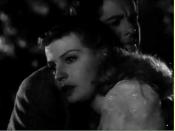THE HAYS CODE In 1966 the current MPAA film code replaced the discredited Motion Picture Production Code, also known as the Hays' Code, after its first director, Will Hays, a man who had wielded absolute power in Hollywood since the Code's inception in 1934.
The Hays' Code was discredited because no movie could be distributed in America without the Hays' seal of approval which was contingent on guidelines that barely concealed a subtext of bigotry and racism.
Among the subjects banned by the Hays' Code were "any licentious or suggestive nudity-in fact or silhouette," miscegenation, slavery, homosexuality, adultery, and childbirth.
Films were also required to foster positive attitudes towards marriage, family, home, governments, and religion. The Code required frequent rewriting of scripts to satisfy the censors, including the expurgation of modern literature as it was adapted to the cinema, among such films: A Farewell to Arms Anna Karinina Of Human Bondage The Grapes of Wrath The Grapes of Wrath was in trouble for its scenes of childbirth and Steinbeck's biting social criticism, both removed from the final version.
To Ben Ray Redman, writing for the Saturday Review of Literature in 1935, the Code's censorship made "Hollywood pictures the emasculated, empty, and meaningless things they are." This forced sterilization of culture was not readily endured by the American public and provoked widespread contempt for the Hay's seal of approval. In theaters across the nation it was frequently greeted by hissing and booing and with, as one industry report noted, as many "raspberries" for the seal as orchids for the new films.
In the following years the censors confronted a perplexing new world: censorship was in retreat, the Supreme Court increasingly stood on the side of the First Amendment, and the public was developing a serious appetite for licentiousness.
The forbidden...


